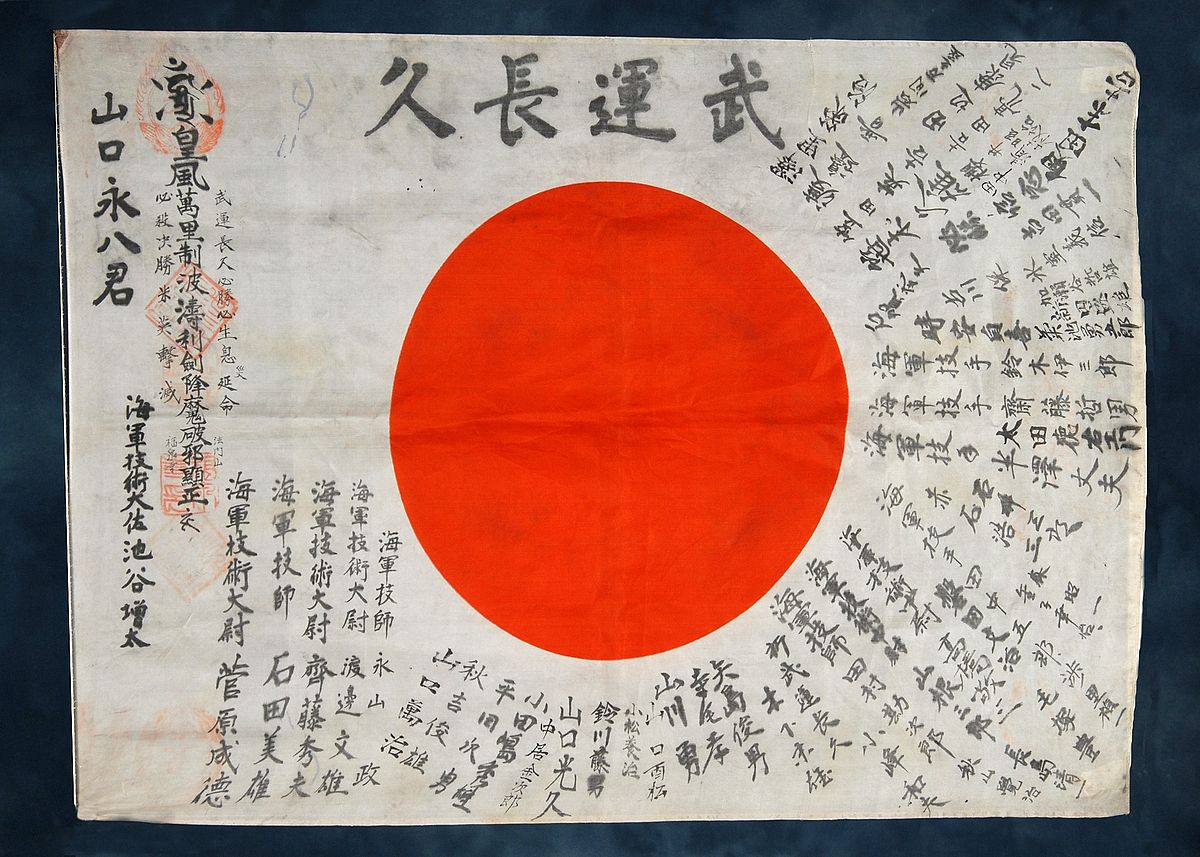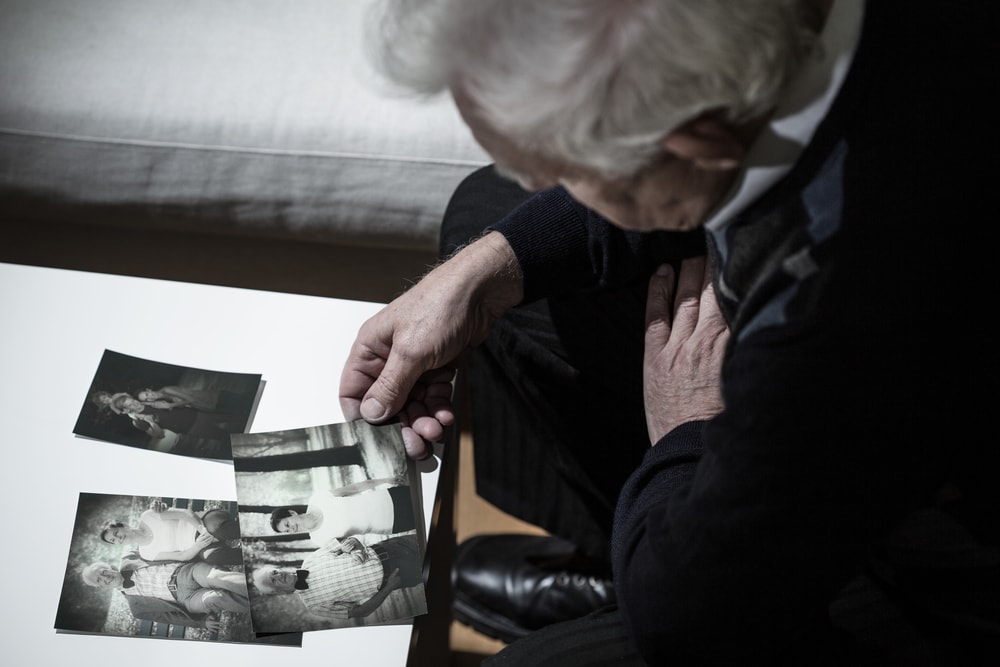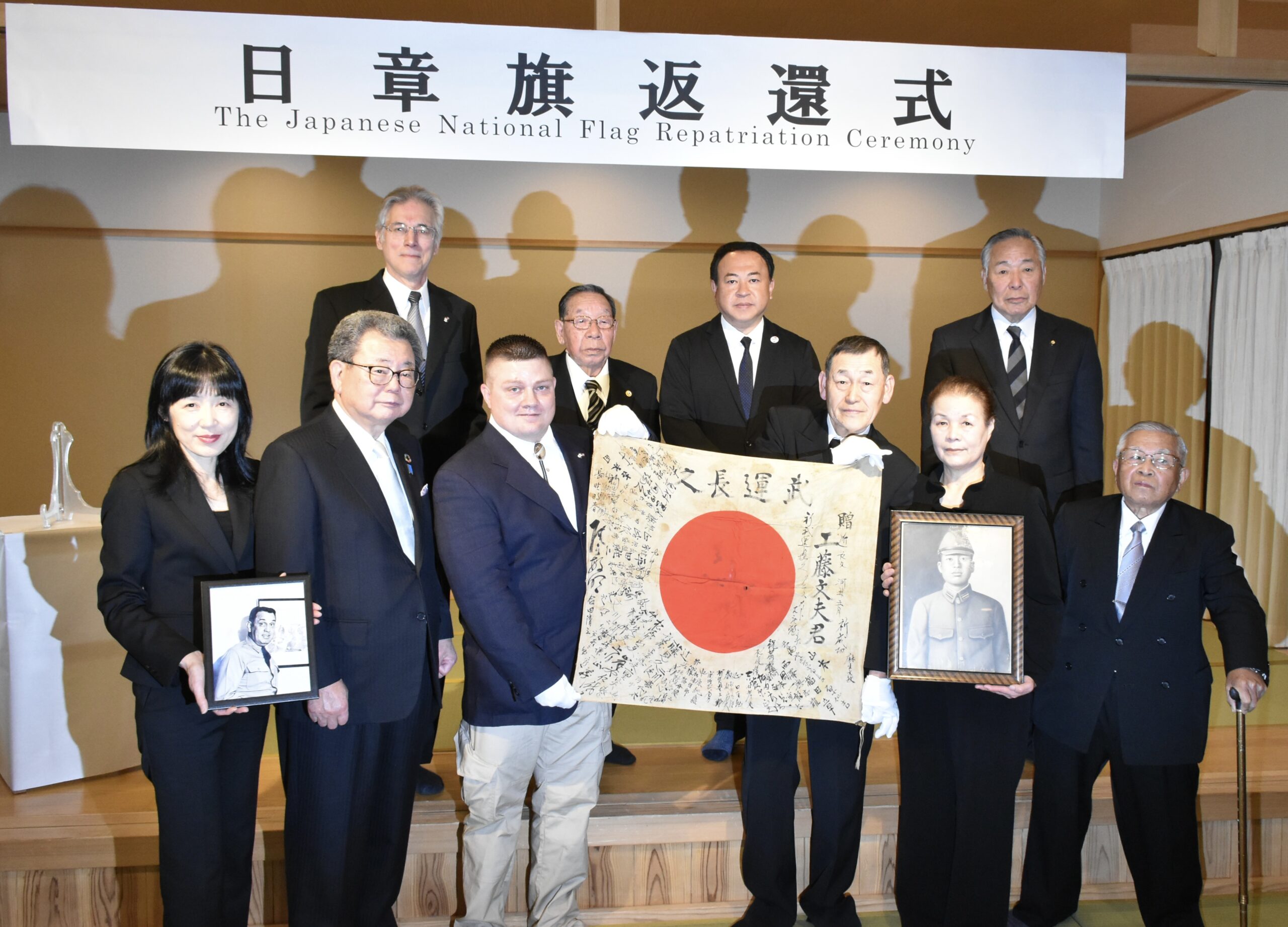NEWS Yosegaki Hinomaru: Returning WWII Flags

During World War II, many American soldiers returned home with a unique souvenir: a Japanese flag covered in handwritten messages. These flags, known as Yosegaki Hinomaru, were deeply personal items for the Japanese soldiers who carried them. They were not just national flags; they were prayers and messages of love from family and friends. Today, decades after the war, many families of these American veterans wish to return these flags to their rightful owners in Japan. For the Japanese families, these flags are not war souvenirs. They are the last tangible connection to a loved one who never came home. The return of a flag is like a part of the soldier finally returning to his family. This article explains the importance of these flags and the respectful investigation process required to find the soldiers’ families. At FAM Investigation Agency, we are honored to assist in this important mission of reuniting these precious items with the families who are still waiting.
Table of Contents
- What is a Yosegaki Hinomaru?
- The Deep Emotional Significance for Families
- The Challenges of Finding a Soldier’s Family
- Our Investigation Process for Returning a Flag
- A Collaborative Effort
- Conclusion: Healing the Wounds of the Past

What is a Yosegaki Hinomaru?
A Yosegaki Hinomaru, often called a “good luck flag,” is a traditional gift given to Japanese soldiers heading off to war.
- A Personal Talisman: Family members, friends, neighbors, and colleagues would all sign their names and write short messages of encouragement and prayers for a safe return directly onto a Japanese flag (Hinomaru).
- Messages of Love and Hope: Common messages included “Praying for your eternal fortune in war” or simply the names of loved ones. The soldier would carry this flag with him as a personal reminder of home and the people waiting for him.
- Unique and Irreplaceable: Because each flag was signed by a different group of people for a specific soldier, every single one is unique. It is a one-of-a-kind historical and personal artifact.
When a soldier died in battle, this flag was often the only personal item left. Many were taken from the battlefield as souvenirs by Allied soldiers.
The Deep Emotional Significance for Families

To understand this work, it’s crucial to understand what these flags mean to the families in Japan.
- It Represents the Soldier: For many families, the remains of their loved one were never recovered. The flag is the closest thing they have to a grave. It is seen as a representation of the soldier’s spirit. Its return is a deeply emotional and spiritual event.
- It Provides Closure: The return of a flag can bring a sense of peace and closure to families who have been waiting for decades. It is a sign that their loved one has not been forgotten and has finally completed their journey home.
- It is a Family Treasure: This is not a military object; it is a piece of family history. It contains the handwriting of grandparents and great-grandparents, connecting the current generation to their ancestors who lived through the war.
This is why the search for a soldier’s family is not treated like a normal investigation. It is handled with the utmost respect and care, similar to our other sensitive family search cases.
The Challenges of Finding a Soldier’s Family

Finding the family of a soldier from over 80 years ago is a very difficult task. It is a form of historical roots research that requires special skills.
- Reading the Flag: The names and messages on the flag are often handwritten in old, stylized Japanese script. Sometimes, only nicknames are used. The first step is to carefully translate and analyze every piece of writing on the flag to find clues.
- The Passage of Time: The soldier’s parents, spouse, and siblings have likely passed away. This means we are often not looking for the original signers, but for the next generation: nieces, nephews, or even grand-nieces and nephews.
- The Koseki Paper Trail: The main tool for this search is the koseki (family registry). We must use the clues from the flag (like a name or a village) to find a starting point in the records. From there, we must painstakingly trace the family line forward through the generations to find a living relative.
Our Investigation Process for Returning a Flag
Our process is careful, methodical, and always respectful.
- Receiving the Case: We typically work with individuals or organizations abroad who have a flag they wish to return. They provide us with high-quality images of the flag.
- Analysis and Research: Our experts analyze the writing on the flag to identify names, villages, shrines, or anything else that can be used as a starting point.
- Historical Record Search: We use this information to begin the search of historical records, primarily the koseki. This is a complex paper trail that can lead us across the country.
- Identifying Living Relatives: We trace the family tree from the 1940s to the present day to identify the most appropriate living relative to receive the flag.
- Making Contact: This is the most delicate step. We make a very gentle and respectful contact with the family. We explain what we have found and ask if they would like to receive the flag. We never pressure the family.
- Arranging the Return: Once the family agrees, we coordinate with our client overseas to arrange the respectful return of the flag to its home.
A Collaborative Effort
We are not alone in this mission. We are proud to work with non-profit organizations like the OBON SOCIETY, whose sole purpose is to return these Yosegaki Hinomaru to the families in Japan.

This collaboration between investigators, non-profits, and the families of American veterans is a beautiful act of peace and reconciliation. FAM Investigation Agency provides the professional investigative skills needed to make these reunions possible.
Conclusion: Healing the Wounds of the Past
The return of a Yosegaki Hinomaru is more than just giving back an old object. It is an act of healing that connects families across generations and across former battle lines. It shows that compassion and respect can triumph over the divisions of the past. We are deeply honored to play a role in this sacred work. Each flag that returns home brings peace to a family that has been waiting for a very long time.
If you have a Yosegaki Hinomaru that you would like to see returned to its family in Japan, please contact FAM Investigation Agency today. We can help you complete its journey home.
